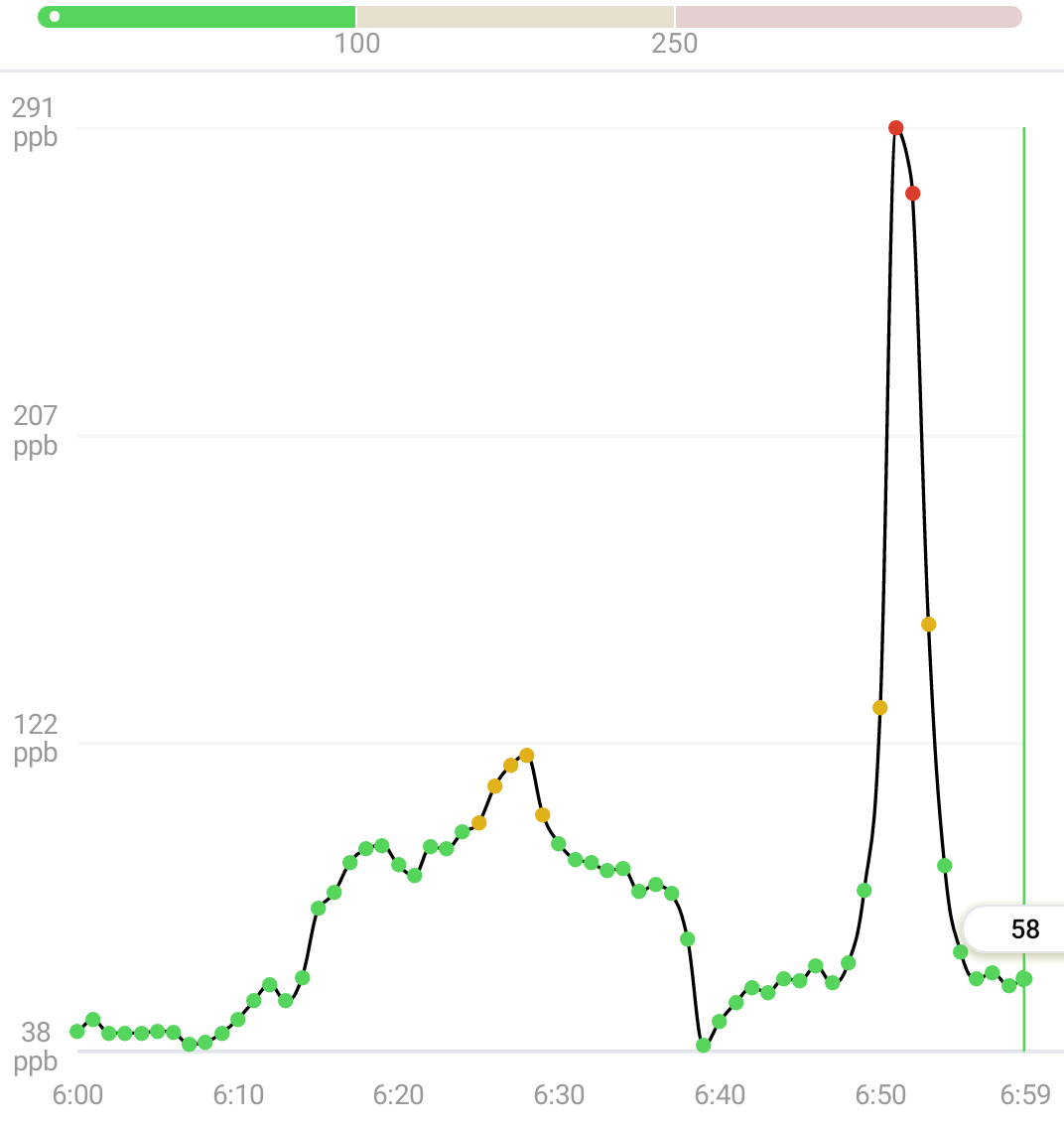How bad is my gas stove? (Part Two)

Two months ago I wrote a story asking the question, “How bad is my gas stove?” I admitted that I was initially skeptical of the panic over gas cooking given that stoves are responsible for such a small fraction of carbon emissions (0.12%). At that time, I feared that by attacking gas stoves — an appliance that is quite popular — the climate community would risk backlash and not be as effective at convincing people to swap out their furnaces for heat pumps and gas water heaters for heat pump water heaters, actions that would reduce far more emissions.
But then I learned about the latest health research that suggests gas stoves increase the risk of respiratory illnesses like asthma. And so I decided to go into the rabbit hole of research on the link between indoor air pollution and human health. And boy did I go into the rabbit hole.
Over the last two months I’ve spent dozens of hours reading through academic papers and studies dating back to the 1970s. I read both the EPA and WHO’s reports and recommendations on indoor air quality. Then I read the papers they referenced and in the case of meta-analyses, I read the papers those papers referenced.
I also installed air quality monitors all over our house and ran tests to see the impact of using our gas stove. And then I got advice on interpreting the results from an environmental epidemiologist.
In this installment of the series on gas stoves, I want to share what I learned.
A brief history of indoor pollution research
Research on air pollution and human health began in earnest in the middle of the 20th century. But it wasn’t until the 1970s that researchers began to turn their attention indoors. Many of these researchers hypothesized that just as power plants and gas-combustion cars produce harmful levels of pollution outside, activities like smoking cigarettes and using gas appliances produce harmful levels of pollution inside.
Early studies on the link between gas cooking and human health came with mixed results though. In 1973 researchers in England and Scotland surveyed the parents of 5,658 children and found a positive correlation between gas cooking and asthma symptoms. Later that decade, the same researchers surveyed 390 infants born between 1975 and 1978. This time they found no correlation between respiratory illness rates and cooking fuel.
Due in part to the growing awareness of the link between smoking cigarettes and cancer, dozens of researchers ran studies on NO2 exposure and respiratory illness in the 1970s and 80s. In 1992 the EPA analyzed results from dozens of these studies in the first meta-analysis on the topic. They concluded that for every 30 μg/m3 increase in nitrogen dioxide (NO2) – comparable to the increase resulting from exposure to a gas stove — the odds of respiratory illness in children go up by 20%.
Over the next two decades many studies confirmed the same finding. The link between gas stoves (and poorly vented gas furnaces and water heaters) became abundantly clear. In 2005 the World Health Organization recommended limiting both outdoor and indoor sources of NO2 to an annual average of 40 μg/m3.
Every year more damning evidence piled up. In 2013 another meta-analysis confirmed the results of the 1993 meta-analysis. But this time, researchers were more specific and pointed to gas stoves in particular as the likely cause of respiratory illness. They concluded, “Children living in a home with gas cooking have a 42% increased risk of having current asthma.”
This past September the WHO updated their guidelines to a maximum annual average of 10 μg/m3. While it’s possible to build a home with a gas stove that meets these guidelines, virtually no home in America, new or old, actually does.
Yet, despite all this evidence, the EPA hasn’t issued their own guidelines on indoor air pollution. More than 10 million homes have been built since the WHO published their first indoor air pollution guidelines. Roughly a third of those homes have a gas stove in them. Each time the people living in those buildings click on the burner, they’re slowly damaging their lungs. But most of them have no idea.
A little at-home science experiment
In November I installed air quality monitors throughout our house and began running my own experiments on indoor air pollution. Every night, as we turned on the gas stove or heated up the oven to cook dinner, NO2 levels in both our kitchen and bedroom spiked.

(One quick note: Sometimes you’ll see NO2 measured in micrograms (one-millionth of a gram) per cubic meter or µg/m3. Other times you’ll see it in parts per billion or ppb like the graph above. The conversion is [ug/m3]/1.88 = 1 ppb. Very annoying, I know).
There was one day of the week that NO2 levels didn’t spike, however. Every Tuesday we get takeout and, unsurprisingly, on those nights, NO2 levels were much lower.
The holidays offered another opportunity for testing. On Christmas Eve, we went to the mountains to visit my family for a night. When I looked at the air quality monitor data for that day, I saw that our NO2 levels were lower than any other day in the month.
At first I figured it was because we weren’t cooking anything. But then I realized that if that were true, NO2 levels would have plummeted like that every Tuesday when we didn’t use our gas stove.
When I spent more time looking at the data, I noticed something strange. In almost every 24 hour period, our NO2 levels were the highest between about 2am and 7am. Unless my wife was sneaking out of bed for midnight snacks, something was amiss.
I looked at the energy usage data from our Nest thermostat and discovered that those levels corresponded almost exactly with the times that our gas furnace was on. I reached out to a friend who used to work as an energy auditor and he told me that any number of things could be causing this. Our furnace could be venting improperly. Or maybe it was our water heater. Or a change in air pressure caused by the furnace could be causing the water heater to vent improperly.
That same week I had an energy auditor come out to our house through our utility’s rebate program. When I asked them about the NO2 levels, they said they didn’t have the equipment to measure it. They only focused on the stuff that kills you quickly like carbon monoxide, not the stuff that wreaks havoc on the human body slowly over the course of years.
Shortly after the audit I sent some of the data from my tests to Josiah Kephart, an environmental epidemiologist who studies this stuff for a living. In an email he wrote, “I would say you’ve got a pretty big NO2 problem. Your daily averages are mostly hovering around 25ppb, which is double the [WHO] daily guideline.” Then he wrote something that really stuck with me: “What happens ALL the time is someone actually tests indoor NO2 from gas appliances, and industry or other folks say ‘Well your ventilation must be messed up’ or in your case ‘Oh you must have spillage from the furnace.’ There are constantly folks who treat this with a hint of blaming the individual homeowner dismissing this as the exception (without evidence).”
But he pointed out that there’s a problem with this logic: “I don’t care about how the cooking/heating/etc system is supposed to work, I care how it really is working in real life. And what we see when we actually test these things in real life (vs. in the lab/factory) are high levels of indoor NO2 everywhere we look.”
In other words, it may be possible to build a home with perfectly vented gas appliances, and there may be a “safe” level of NO2, but in the real world — in the homes that we all actually live — this is probably the rare exception. The more likely norm is unused range hoods, furnace flues that spill chemicals into the air we breathe, and ultimately higher rates of illness.
I began this research as a skeptic. Why? For the same reasons you may be skeptical right now. Accepting that a gas stove or any other fossil-fuel appliance makes a home less healthy isn’t simply an abstract intellectual exercise. It has practical consequences like forking up the time and money to replace the thing — an option that, like so many other health improvements, isn’t available to all.
But as I’ve learned more about this topic, my skepticism has faded. Every rigorous review of the research points to the same conclusion: Most homes have unsafe levels of nitrogen dioxide and that results in higher rates of respiratory illness (especially amongst children). Or to borrow a quote from John Maynard Keynes, “When the facts change, I change my mind – what do you do?”
—
In Part 3, which I hope to publish later this year, I plan to write about what comes next. Are we going to ditch our gas stove and replace it with an induction stove? If so, how do we do it? How much does it cost? Or are we going to leave the gas stove in and find another work around?
We just recently moved into our home, so these are still very open questions. But I hope sharing our thought process can be helpful to some of you.
In the meantime, I hope sharing some of the latest research on indoor air quality is helpful.
Want to get an email when Part 3 comes out? Sign up for the Carbon Switch newsletter here.

